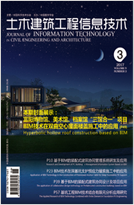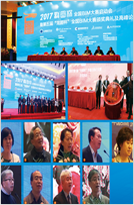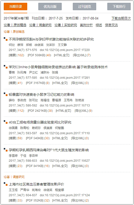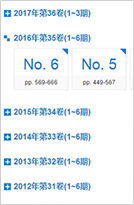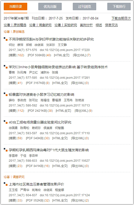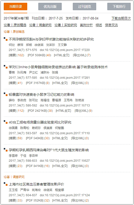2010, 2(1): 7-11.
中国建筑企业国际化绩效评价体系研究(连载)
香港理工大学建筑与房地产学系 |
The Study of Chinese Construction Enterprises' Internationalization Performance Evaluation System
Department of Building and Real Estate, The Hong Kong Polytechnic University, Hong Kong, China |
引用本文:
李恒, 金志刚. 中国建筑企业国际化绩效评价体系研究(连载)[J]. 土木建筑工程信息技术,
2010, 2(1): 7-11.

Citation:
Li Heng, Jin Zhigang. The Study of Chinese Construction Enterprises' Internationalization Performance Evaluation System[J]. Journal of Information Technologyin Civil Engineering and Architecture,
2010, 2(1): 7-11.

摘要:随着中国的入世和近年来国家“走出去”战略的实施,已经促使越来越多的中国建筑企业走向国际市场。为使企业能够更好的实现国际化发展,有必要对这些企业海外经营绩效进行评价,以及时的发现他们在经营中存在的不足和偏差,从而为企业制定科学而有效的发展战略提供参考和指导,因此,建立一套科学而适用的国际化绩效评价体系就尤为重要。本文在总结以往理论研究的基础上,参考平衡计分卡的考核框架体系并结合了建筑产业的持点,构建出一套能够适用于中国建筑企业的国际化绩效评价体系。最后,通过一个企业实际的应用案例来展示该体系的可行性与适用性。从而,本研究为建筑企业的国际化经营提供了一套科学的理论指导体系。
Abstract: Accompany with China's economic dramatic growth, construction industry of china has experienced huge leverage. Chinese construction enterprise, one of the main participants in the industry, has also received a golden chance of development and expansion. There are more and more enterprises have gone out of the national boundary to pursue further growth and prosperity in the international market. In order to help their expansion in the international market more efficiently, an evaluation framework of construction enterprise's international performance was formulated on the basis of Balance Scorecard. Then, a case study was conducted to illustrate the application of evaluation system. In the case study, a Chinese construction firm and other four top international construction firms were selected to carry out comparison analysis. The findings provide an insight into the weakness that influence in-ternational development of Chinese construction enterprises and also help practitioners to timely adjust their strategy of international operation to ensure international business success.
| [1] |
Bilkey, W. J. and Tesar, G. (1977): " The Export Be-havior of Smaller Wisconsin Manufacturing Firms", Jour-nal of International Business Studies, Vol. 8, Spring/ Summer. Carlson, S. (1975): How Foreign if Foreign Trade, Uppsala University: Uppsala. |
| [2] |
Johanson, J. and Wiedersheim-paul, F. (1975): " The Internationalization of the Firm-Four Swedish Cases ", Journal of Management Studies, Vol. 12, No. 3, October. |
| [3] |
Johanson, J. and Vahlne, J2E. (1977): " The Interna-tionalization Process of the Firm-A Model of Knowledge Development and Increasing Foreign Market Commit-ments. ", Journal of International Business Studies, Vol. 8, Spring/Summer. |
| [4] |
Johanson, J. and Vahlne, J. 2E. (1990): " The Mecha-nism of Internationalization", International M Marketing Review Vo l. 71 Paliwoda, Stanley (1995): International Marketing, pp. 29-50, butter worth-Heinemann L td. |
| [5] |
Welch, Lawrence and Luostarinen, R, (1988): " Inter-nationalization: Evolution of a Concept", Journal of Gen-eral Management, 14 (2): pp134-551 |
| [6] |
Andersen, O. & Kheam L. S. Resource based theory and international growth strategies: an exploratory study]. In-ternational Business Review, 1998, (7)163-184. |
| [7] |
Andersson, A. & Gabrielsson, J. international activities in small firms examining factors influencing the internation-alization and export growth of small firms. Canadian Jour-nal of Administrative Science, 2004, 21 (1)22-35 |
| [8] |
Asinn, C. N. Export performance: Do managerial percep-tions make difference? International Marketing Review, 1988, 24 (5):61-71 |
| [9] |
Bame, J. B. Strategic factor markets: Expectations luck and business strategy. Management science, 1986, 32 (10):231-241 |
| [10] |
Bamey, J. B. Firm resource and sustained competitive advantage. Journal of Management, 1991, 17 (2):99-120 |
| [11] |
Boey, J. B. Resource-based theories of competitive advan-tage: A ten-year retrospective on the resource-based view. Journal of Management, 2001, 27(3):643-650 |
| [12] |
Bartlett, C. A. & Ghoshal, S. Managing across borders: New organizational responses, Sloan Management Review, 1987, 29 (1):43-53 |
| [13] |
Bilek, W. J. An attempted integration of the literature on the export behaviour of firms. Journal of international Business Studies, 1978, 9 (l):33-46 |
| [14] |
Bilker, w. J. & Tesar, G. The export behaviour of smaller Wisconsin manufacturing firms Journal of international Business Studies, 1977, 8(000001):93-98doi: 10.1057/palgrave.jibs.8490783 |
| [15] |
Boeker, W. & Goodstein, J. Organizational Performance and adaptation Effects of environment and Performance on changes in board composition. Academy Management Journal, 1991, 4(6): 805-826 |
| [16] |
Buekley, P. J. & Casson, M. C. Analyzing foreign mar-ket entry strategies extending the internalization approach. Journal of international business. |
| [17] |
Dunning, J. H. The eclectic Paradigm as an envelope for economic and business theories of MNE activity. Interna-tional Business Review, 2000, (9)163-190 |
| [18] |
Dutton, J. & Duncan, R. The influence of the Strategic Planning Process on Strategic Change. Strategic Manage-ment Journal, 1987, (8):103-116 |
| [19] |
Dwyer, ER. & Schurr, P. The eclectic theory of interna-tional Production: a case study of the international hotel industry. Managerial and Decision Economics, 1987, 25 (2):197-210 |
| [20] |
Fisch, J. H. Exploring the globalization of German MNCs with the complex spread and diversity measure. Schmalenbach Business Review, 2003, 55 (1): 2-22doi: 10.1007/BF03396663 |
| [21] |
Forsgren, G & Johanson, J. Division headquarters go a-broad-A step in the internationalization of the multination-al corporation. The Journal of Management Studies, 1995, 32 (4):475-492doi: 10.1111/joms.1995.32.issue-4 |
| [22] |
Franko, L. G. Global Corporate Competition: Who ' s Winning, Who' s Losing Strategic Management Journal, 1989, 10 (5): 449-475 |
| [23] |
Galan, J. I. & Galende, J. Determinant factors of interna-tional development: Some empirical evidence. Manage-ment Decision, 1999, 37 (10):775-759 |
| [24] |
Gomez-Mejia, L. R. The role of human resources strategy in export Performance: A longitudinal study[J]. Strategic Management Journal, 1988, 9 (5):493-505doi: 10.1002/(ISSN)1097-0266 |
| [25] |
Grant R. M. The resource-based theory of competitive ad-vantage: 11nplieation for strategy formulation[J]. Califor-nia Management Review, 1991, 33 (3):114-135doi: 10.2307/41166664 |
| [26] |
Grinyer, P. & Mceman, P. Generating major change in stagnating companies[J]. Strategic Management Journal, 1990, 11 (3):131-146 |
| [27] |
Hall, R. A framework linking intangible resources and ca-pabilities to sustainable competitive advantage. Strategic Management Journal, 1993, 14 (607):618-638 |
| [28] |
Johanson, J. & chlne, J. E. The mechanism of interna-tionalization. International Marketing Review, 1990, 7 (4):11-24 |
| [29] |
Johanson, J. & Wiedersheim-Paul, F. The internationali-zation of the firm-four Swedish cases. Journal of Manage-ment Studies, 1975, 12:305-322doi: 10.1111/joms.1975.12.issue-3 |
| [30] |
Jolly, V & Alahuhta, M. Challenging the incurnbents: How high-technology Start-up compete globally[J]. Jour-nal of Strategic Change, 1992, 1:71-82doi: 10.1002/(ISSN)1099-1697 |
| [31] |
Kedia, B. L & C hhokar, J. 5. Factors in habiting export Performance of firms: an empirical investigation[J]. Management international Review, 1986, 26 (4):33-43 |
| [32] |
ng, 5. W. & Solomonlssues, GT. hi growing a family busi-ness: A strategicHuman resource model[J]. Journal of Small Business Management, 2001, 39(1): 3-13 |
| [33] |
Kight, GA. Emerging Parading for international market-ing: The born-global firm. PhD, USA: Michigan State U-niversity, 1997 |
| [34] |
Knight, GA. & Cavusgil. innovation, organizational capa-bilities, and the Born-global firm. Journal of international Business Studies, 2004, 35(2): 305-322 |
| [35] |
Knudsen, T. & Madsen, T. K. Export strategy: A dynamic capabilities perspective. Andinavian Journal of Manage-ment, 2002, 18(4):475-502. |
计量
- PDF下载量(13)
- 文章访问量(1172)
- HTML全文浏览量(813)



